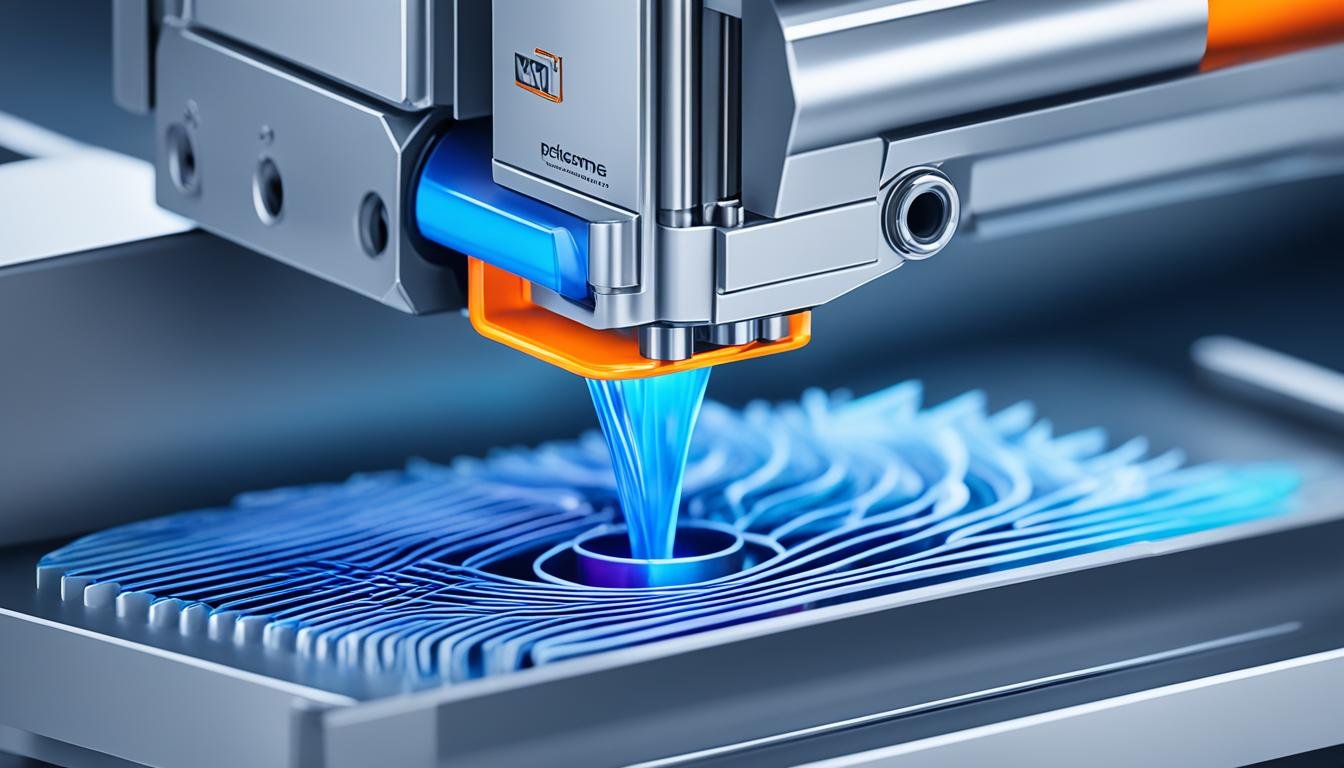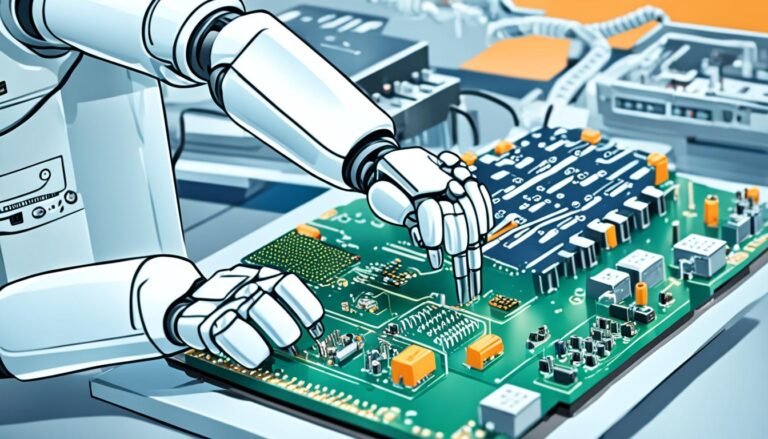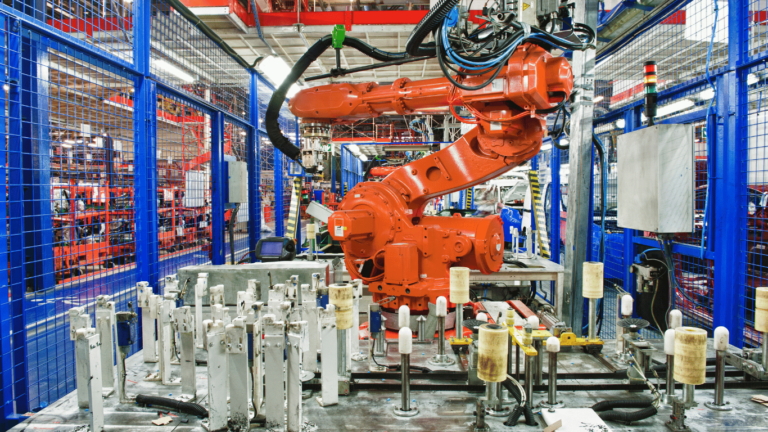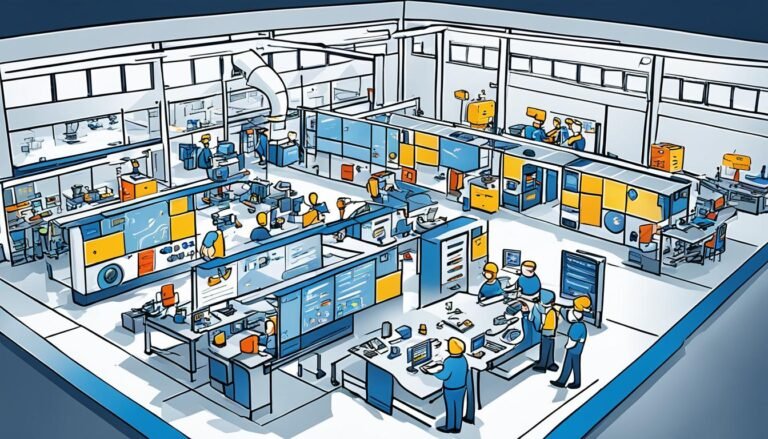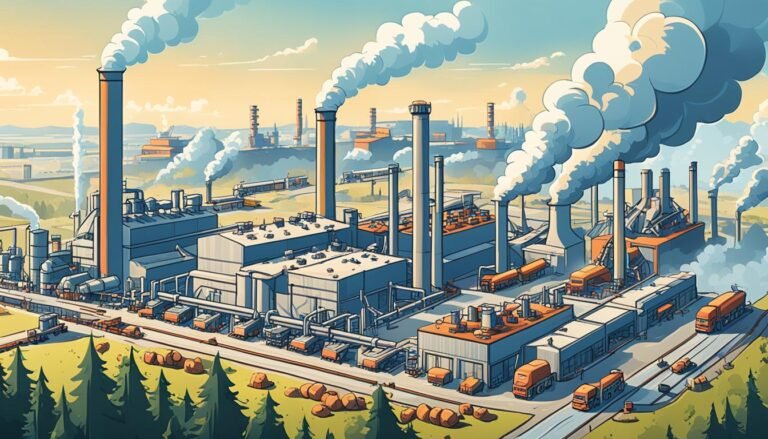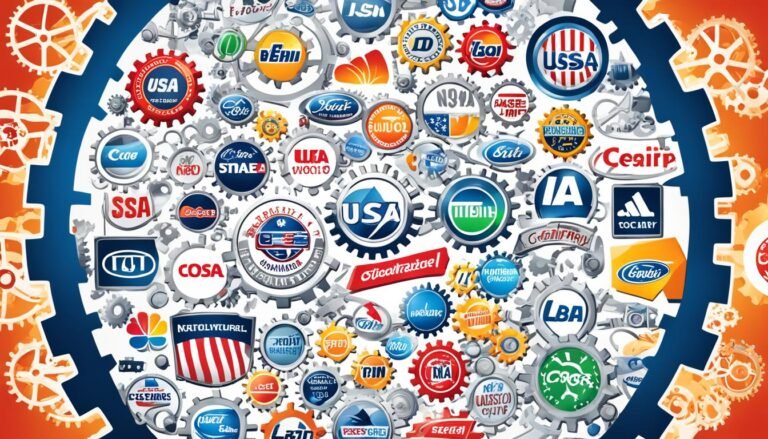Plastics Manufacturing: Innovative Solutions and Processes
Did you know the global market for plastic resins was over $580 billion in 2020? This shows how big plastics are in many industries. They are key because they can be shaped in many ways and are used in everything from toys to medical devices.
Understanding how plastics are made is key to making new products. It’s important to know both old and new ways of making plastics. This helps us make better products.
Choosing the right way to make plastics depends on several things. These include how complex the part is, the cost, how much you need, and what the plastics are used for. New tech like 3D printing is changing things by making it faster and cheaper to start making products.
This new tech, along with the old ways, is changing the plastics industry now and in the future.
Key Takeaways
- The global plastic resin market exceeded $580 billion in 2020, showing plastics’ big role.
- Plastics are crucial for many products, from daily items to important medical tools.
- Picking the best way to make plastics looks at part complexity, cost, volume, and material needs.
- 3D printing is changing the game by cutting down on time and costs to start making products.
- Knowing both old and new tech is key to staying ahead in plastics manufacturing.
Overview of Plastics Manufacturing Techniques
Plastics manufacturing uses many techniques for different needs and materials. We’ll look at the main methods and their benefits.
Injection Molding
Custom Injection molding is key for making lots of items with complex shapes. It’s great when design for manufacturing (DFM) matters. This method is top for making small to medium-sized plastic parts affordably.
Extrusion
Extrusion is best for making long, thin items like pipes and sheets. It keeps products consistent and is good for making lots of items. This helps keep costs down.
Blow Molding
Blow molding makes hollow items like bottles. It blows melted plastic into a mold. This method is efficient for making lots of light, hollow shapes.
Thermoforming
Thermoforming heats plastic sheets to shape them in molds. It’s great for making lightweight, strong items. Design for manufacturing (DFM) is key to making production smooth.
Rotational Molding
Rotational molding, or rotomolding, is perfect for big, hollow items. It mixes powdered plastic in a mold and heats it to shape. This method is great for large items like storage tanks and playground equipment. It’s also cost-effective for making lots of items.
Materials Used in Plastics Manufacturing
The choice of material in plastics manufacturing is key to the product’s durability and use. Each type of plastic, whether thermoplastic or thermosetting, has special properties. These properties make it good for certain uses. It’s important to know about these materials for those in the industry.
Thermoplastics
Thermoplastics, like acrylic, ABS, and polyethylene, can be heated and cooled many times without losing their shape. This makes them great for things that need to be flexible and last a long time. They can also be melted down and reused, which is good for the environment.
Thermosetting Plastics
Thermosetting plastics, such as epoxy and polyester, stay solid once they cure. They don’t change shape when heated again. This makes them very strong and good for things that need to last a long time.
| Type of Plastic | Properties | Common Applications |
|---|---|---|
| Thermoplastics | Heat resistance, moldability, ease of recycling | Packaging, automotive parts, consumer goods |
| Thermosetting Plastics | Permanently solid state, stress resistance, stability | Electronics, adhesives, construction materials |
Thermoplastics and *thermosetting plastics* both have different types, picked for their cost, function, and look. By choosing the right material, makers can make sure their plastics work well and last a long time.
Innovations in Plastics Manufacturing
The world of plastics manufacturing is changing fast. Two big changes are leading the way: 3D printing and using AI for digital transformation. These changes are making the industry more flexible, allowing for better customization and efficiency.
3D Printing
3D printing is a big deal in making things new and different. It lets us make parts straight from a design on a computer. This means we can quickly make prototypes and parts that fit exactly what we need.
This makes making things faster and more flexible. It’s a big step towards making things more cost-effective.
Digital Transformation and AI
Using AI to make plastics manufacturing digital is also a big change. AI helps make production better, predict when things need fixing, and keep quality high. This makes making things cheaper and faster.
It also changes how we make things by letting us customize more and get products out faster. These changes are starting a new era in plastics manufacturing.
| Aspect | 3D Printing | Digital Transformation and AI |
|---|---|---|
| Benefits | Design Flexibility, Customization, Prototyping | Optimized Production, Predictive Maintenance, Consistent Quality |
| Impact | Cost-Efficient Solutions, Rapid Production | High Degree of Customization, Expediency |
Challenges in Plastics Manufacturing
The plastics manufacturing world faces many complex challenges. Ensuring efficiency and high-quality production is key. High-volume production means quality control is crucial to avoid mistakes and meet standards.
This balance is vital for keeping customers happy and protecting the brand. Operational costs in plastics manufacturing are a big issue. Costs for raw materials, energy, and waste management change often, needing constant review and new ideas.
Manufacturers must find ways to cut costs without lowering quality. Using energy-saving tech and recycling can help reduce waste and increase profits. Also, advanced monitoring systems can help manage these costs better.
Another big challenge is making manufacturing more sustainable. The industry must cut its carbon footprint and use greener materials and methods. Following laws and what people expect is important. Moving towards sustainable production is key.
Using digital tech and AI can help achieve these sustainability goals. It makes manufacturing smarter and more eco-friendly. As the industry grows, it must keep innovating. It needs to balance economic needs with protecting the environment.

